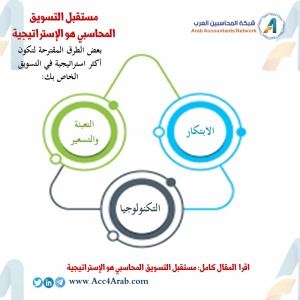عرض العناصر حسب علامة : التسعير
رسالة ماجستير: تصور مقترح لتطبيق نظام التكاليف المبني على الأنشطة ABC في الشركات الصناعية الفلسطينية
هدفت هذه الدراسة إلى التعرف على نظام التكاليف المبنية على أساس الأنشطة، من حيث التعريف الشامل لهذا النوع من أنظمة إدارة التكلفة Management Tools، وخطوات تطبيقه
رسائل ماجستير: العوامل المؤثرة في قرارات تسعير الخدمات في المصارف التجارية العاملة في قطاع غزة
تهدف هذه الدراسة للتعرف على العوامل التي تؤخذ بالاعتبار من قبل إدارات المصارف العاملة في قطاع غزة عند تسعير الخدمات المصرفية
رسالة دكتوراه: التسعير والمنتج المستدام وتأثيرهما على سلوك تكرار الشراء
يهدف هذا البحث إلى قياس أثر تبني شرکات منتجات الألبان بجمهورية مصر العربية لسياسات التسعير والمنتج المستدام علي سلوک تکرار الشراء لدى العملاء.
رسالة ماجستير: واقع استخدام المزيج التسويقي وأثره على ولاء الزبائن
هدفت هذه الدراسة للتعرف على واقع استخدام المزيج التسويقي (الخدمة، التسعير، الترويج، التوزيع) في شركة الاتصالات الفلسطينية وأثره على درجة ولاء الزبائن، ومعرفة مدى وجود فروق بين مفردات العينة حول أثر استخدام المزيج التسويقي على ولاء الزبائن.
رسالة دكتوراه: دور إدراك العملاء لممارسات السلوك التسويقي غير الأخلاقية في رضا العملاء
اهتم البحث الحالي بتوصيف أبعاد إدراک العملاء لممارسات السلوك التسويقي غير الأخلاقية، وکذلک رضا عملاء متاجر التجزئة الإلکترونية، بالإضافة إلى تحديد طبيعة ونوع العلاقة بين إدراك العملاء لممارسات السلوك التسويقي غير الأخلاقية ورضا العملاء.
رسالة دكتوراه: علاقة تطبيق أسلوب ستة سيجما ببناء استراتيجية التسويق الدولي
هدفت الدراسة الى بحث العلاقة بين أسلوب ستة سيجما ببناء استراتيجية التسويق الدولى للشرکات الدولية الکويتية، ورکزت على هذه العلاقة من حيث أسلوب ستة سيجما کمتغير مستقل، واستراتيجية التسويق الدولي للمنتجات، استراتيجية التسويق الدولى للتسعير، استراتيجية التسويق الدولى للترويج، استراتيجية التسويق الدولى للتوزيع، کمتغيرات تابعة.
رسالة ماجستير: دور التكلفة المستهدفة في ترشيد قرارات التسعير
تتناول هذه الدراسة التكلفة المستهدفة باعتبارها من التقنيات الحديثة المستخدمة في الإدارة الاستراتيجية للتقنيات الحديثة المستخدمة في الإدارة الاستراتيجية للتكلفة، والتي تستجيب لحاجات المؤسسات لمواجهة التحديات التي توجهها خاصة المنافسة الشديدة.
أفضل استراتيجيات إدارة العملاء لشركات المحاسبة
كثيرًا ما نلاحظ أن مالكي شركات المحاسبة يهتمون كثيرًا بعملائهم. ومع ذلك، يعتقد العديد من الأفراد الذين يغيرون شركاتهم أنهم لم يتلقوا الرعاية المناسبة من محاسبهم السابق.
معلومات إضافية
-
المحتوى بالإنجليزية
Better client management strategies for accounting firms
By Jason Schow and Jason Blumer
March 09, 2021, 11:35 a.m. EST
6 Min Read
Facebook
Twitter
LinkedIn
Email
Show more sharing options
We frequently observe that accounting firm owners care a lot for their clients. Still, many individuals who change firms believe they didn’t receive the appropriate care from their previous accountant. There is a clear disconnect regarding the accounting professional’s intent.
This is a phenomenon that we directly experience with some new clients. They typically tell us that their last firm wasn’t proactive enough and didn’t provide the value they expected. Yet from interactions with hundreds of accounting professionals, we have seen firsthand that they generally care very much for the people they work with.
So how can the accounting profession provide clients with a high-value service that reflects the firm’s concern? The answer may be in the creation of an efficient client management strategy — an aspect that is often not given the proper attention as firms grow.
Managing Your Firm in a Post-COVID World
Think beyond the pandemic with exclusive resources to help you build a thriving virtual practice.
SPONSORED BY INTUIT ACCOUNTANTS
Client management is an essential aspect of leading and running a professional accounting firm efficiently and providing ongoing value to clients. Also, as your clients are the firm’s source of revenue, they are obviously central to your company’s sustainability and growth.
It is a good idea to manage each clients’ entire journey versus expecting them to decide how, when, and what they purchase from the firm.
A client management strategy has a model that each firm can follow to make sure they are providing the client care needed to keep their firm running and developing. Overlooking this ecosystem can impact resources and result in clients receiving a lower level of service.
There are three stages where client management is particularly important: onboarding, pricing, and more generally in your business model.
Client onboarding
This is the first step when you start working with a new client before they receive any services. Something that has stood out as good practice during this phase is to make sure the clients you take on are a good fit for the way you do business. This is key to building a sustainable firm that you and your staff enjoy.
The process of new client intake can be slowed down to a point where you can create a place for value judgments, where both you and the potential clients can decide to work together or not. When the sales process is slowed down like this, you can give comfort to the client while increasing the perceived value of your work.
Some aspects — or the entire process — can be virtualized, for example by using Zoom conferences and shared documents. It is now possible to operate a virtual firm, and with the current pandemic situation, it is even an encouraged practice.
The ultimate goal in the client-onboarding phase should be to align with the potential client, dive into real discovery of their needs, and prepare them to be priced.
Pricing
Pricing is the second phase and happens before the service begins. Determining value in pricing is generally a skill that takes time and practice to master. Here are some questions we suggest asking potential new clients to help define price:
Why are you looking for a new accountant? Why now?
What do you hope to achieve in working with our firm? What do you see in us that made you interested?
How will we know this is successful?
What has stopped your company from resolving this in the past? What might stop your company from achieving these results in the future?
What will your company look like in two years?
What keeps you up at night?
What gets you up in the morning?
What have you valued about past relationships with financial coaches or advisors?
If working with our firm requires more time from you, can you commit that time? What are you willing to say no to for our collaboration to be a success?
What are all the issues to be addressed?
Did we get it right? What did we not ask that we should have?
Here are some practical observations on different types of pricing:
Hourly billing lends itself to a faster, more commodity-based firm business model. Hourly billing takes no client assessment, no conversations as to what the client may value, and puts the client in control to let the firm know what to do. Hourly billing is the fastest form of running a firm, as it takes little time to bring new clients into the firm. Any client is welcome in a billing firm.
Fixed pricing applies a single price to a service that is offered by the firm. Note that this is different from value pricing, where only the client has a price. Firms that offer monthly packages are doing fixed pricing.
Value billing is another form of hourly billing, yet takes it one step further. When the bill is calculated, a value markup is applied if the client perceives higher value than when the services were started. This is a difficult model to operate within since the influence of value with a client begins at the outset of a relationship, not after the work has been completed.
Value pricing is the slowest form of a firm’s business model. In a value-pricing firm, there are essentially no prices for services. Only the clients have prices since all services can (and are) sold to them for different prices depending on what they value most.
Firms do not have to exclusively adopt one model of pricing or billing but can instead weigh their benefits and apply the different models to different client groups or to different divisions of a firm (in large organizations). For example, firms offering advisory services would lend themselves to value pricing done by the owners of the firm, while the accounting and tax recurring revenue of many firms is suitable for a fixed pricing model.
No matter which model of pricing is chosen in your client management strategy, value is the core component to help the client and firm align on the goals and payment of the service.
Business model
The business model is the final phase where service happens and is the team structure you use to deliver services.
The way you manage your company’s capacity is fundamental to your firm being able to create efficient profit. There are several pillars to capacity management:
Time and location: These are the more controllable aspects of capacity. A firm can request their team work a certain amount of time in locations that afford the greatest productivity and use of that capacity.
Mind and emotions: These elements are generally not controllable. These are simply what the humans working in the firm bring with them each day. They are not strategic at all, and you never know when issues may appear and prevent the professional from focusing on their work. Leaders of the firm should be able to identify any team inefficiencies if they want to create profit for their growth, investment, and distributions. Managing and strategically predicting capacity is the key to turning the right amount of revenue into efficient profit.
Project management: This is the management of the scope of your services, the assignment of work to the team members, and the management of related software products that this management resides in. Project management is the foundation of service and is how a firm owner knows what work is flowing through their firm and what is being managed properly.
This is a high-level overview of the client management journey, and we hope it helps as you navigate this topic. Client management is an important matter in any firm. Without a strong vision about what this means, both firm owners and clients will struggle. Tackling topics like client management sets a firm apart to provide immense value, which in turn justifies higher prices in the marketplace they serve.
اكتساب وقت ثمين من خلال التكنولوجيا
معلومات إضافية
-
المحتوى بالإنجليزية
Gaining valuable time through tech
By Jody Padar
March 09, 2021, 11:51 a.m. EST
5 Min Read
Facebook
Twitter
LinkedIn
Email
Show more sharing options
I have been talking about accounting firm transformation for so many years now that sometimes it seems like I’m on repeat. What was “radical” five or ten years ago — the cloud, for example — is now a reality for pretty much every firm.
The beauty of the radical movement is that it’s always been based on innovation. It used to be that we were waiting for tech to catch up so we could really go full throttle with transformation. But the tech we need to radically transform our firms and add back valuable time is already here. Here’s how to harness it.
The why
Managing Your Firm in a Post-COVID World
Think beyond the pandemic with exclusive resources to help you build a thriving virtual practice.
SPONSORED BY INTUIT ACCOUNTANTS
Why should you invest in a best of breed tech stack? Why do you want to upend your current processes and migrate clients to a new model?
The truth is that inefficiency is costing you money and opportunities.
It’s harder to see in a firm that bills by the hour, but inefficiency is still there. Take last year — how many more of your clients came to you and your staff for help with everything from PPP loan forgiveness to cash flow forecasting? What other advisory services did you provide? If a firm wasn’t positioned to offer these services or didn’t have the capacity to offer them, that’s a problem. It’s hard to focus on advisory when you’re busy doing data entry and repetitive tasks.
If you know your people are busy, but you can’t tell if they’re efficient or even effective, there is a better way.
Data is the catalyst for change
What data, you might ask? Data gleaned from team surveys, interviews with key personnel and timesheets.
Information from data gathering can be grouped into four categories:
Pricing: Billing rates, scope mismanagement and allocation of hours;
People: Staff to manager ratio, communication, professional responsibilities and specialization;
Process: Documentation, silos, duplication and standardization; and
Technology: Replacing antiquated tasks with automated tech, in-house tech experts.
Your goal will be to look at each of these areas eventually, but transformation can still be achieved one area at a time. Let’s dive into each of these areas more.
Pricing
One of the many challenges with hourly billing is that hourly rates tend to remain stagnant year after year. As client size and/or scope increases, too often the billing rate stays the same. This in turn lowers the value capture.
That challenge is often made worse with scope creep; an area where teams need training. They need to be aware of what is included in an engagement and what’s not, and have the ability to communicate with the client and say, “I can absolutely help you with this, but it’s outside the scope of our engagement and I will need to charge for it.”
This is where pricing strategy comes in. Look at the services your current client base is buying and organize offerings into packages that align with those services. Make sure everyone knows the parameters of what’s included and encourage (and train) your team to communicate with clients better.
You also want to find out how hours are allocated across the firm. A common issue firms experience is that their highest value resources — partners and managers — are doing lower-value work. This drives up the cost of engagements and erodes profitability. What to do? Train your staff on how to deliver advisory services. Remove some of their workload with automated tech. It’s a win-win.
People
Speaking of staff, managers and partners, do you know what the staff-to-manager ratio is at your firm? You should. The top 25 CPA firms had an average 19:1 ratio as of 2018. If your firm moved closer to that benchmark, you’d likely see a contribution margin increase of around 60 percent. For that to happen, you will need to increase staff capacity by around 16 percent and shift 400 hours or so from partners and managers to staff. It can be done with tech.
You may also consider splitting up managers so they can specialize in a certain area. Specialization boosts value — it saves time, allows new services that can be developed and sold, and lets people thrive according to their skill set and personality. For example, a mid-size firm might have bookkeeping, accounting advisory and tech advisory as their three core areas. Restructuring processes is often the first stage in team specialization.
Process
Your goal here is to create standard processes that every team, office and department will follow. Without standardization, your clients can’t expect consistent results. Once you have your processes documented and standardized, how do you communicate that to the organization?
In this way, you can help guide clients toward best practices, instead of letting them decide how your workflow happens. (Paper receipts, anyone?)
Look for the results from staff surveys and stakeholder interviews. Identity silos, document every process for every service, and look for duplicates of any step in the process.
Tech
Last, but certainly not least, if there is an available tech option that automates an antiquated or repetitive process, run toward it with open arms. This will free up so much time within your firm.
You’ll also need people in your firm who are tech specialists. Not tech-certified CPAs, but more like in-house technicians with accounting backgrounds who understand how AI and tech impact accounting workflow. These people are leaders and will spearhead the firm’s tech-driven initiatives. You need an accounting tech visionary if you will.
Tech alone can’t fix broken processes, but when better tech plus standard processes, the result is like magic. As your firm integrates technology, the pricing model must evolve.
Automation tech lets firms scale up without adding more staff or hours. What does it take for a mid-size firm to sustain 2 percent quarterly growth? If a firm operates “as-is,” it cannot achieve that growth without hiring an additional staff person. However, a firm with substantial tech assistance can gain around 9,000 hours a year to reinvest in training, technology, advisory and growth.
After all, the business we’re in is bigger than accounting. Accounting is one piece of the entire pie.
If your vision for the firm doesn’t include filling hours with additional work, there’s something to be said about going home early. That too can be transformational in other ways.
How will you spend your time in 2021?










